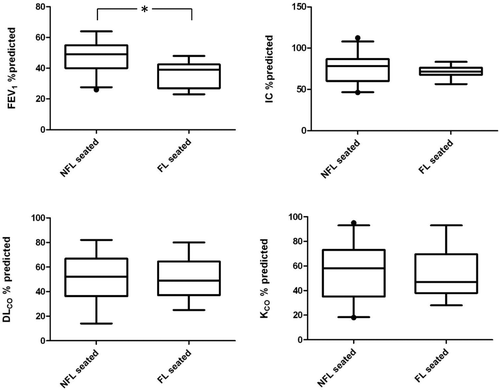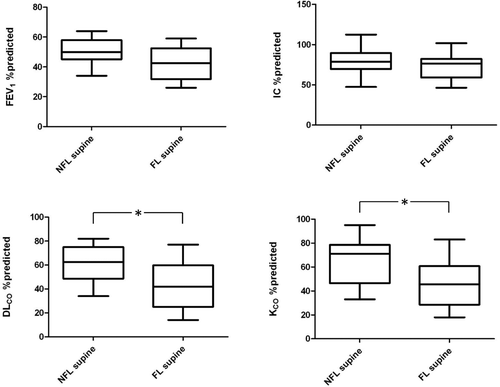Figures & data
Figure 1. Comparison of most relevant functional parameters between COPD patients without (NFL; n = 27) and with (FL; n = 13) resting tidal expiratory flow limitation in sitting position. Only FEV1 is significantly lower in FL patients (* = p < 0.05).

Table 1. Anthropometric and functional parameters of all patients studied and of the two groups of patients divided according to the presence of expiratory flow limitation in sitting position
Table 2. Functional parameters and dyspnea score of the two groups of patients divided according to the presence of expiratory flow limitation in supine position
Figure 2. Comparison of most relevant functional parameters in COPD patients who are NFL in sitting position (n = 27) between those without (NFL; n = 13) and with (FL; n = 14) tidal expiratory flow limitation in supine position. Both DLCO and KCO are significantly lower in supine FL patients (* = p < 0.05), while FEV1 is not.

Table 3. Functional parameters and dyspnea score of the two groups of patients divided according to the presence of expiratory flow limitation only in supine position
